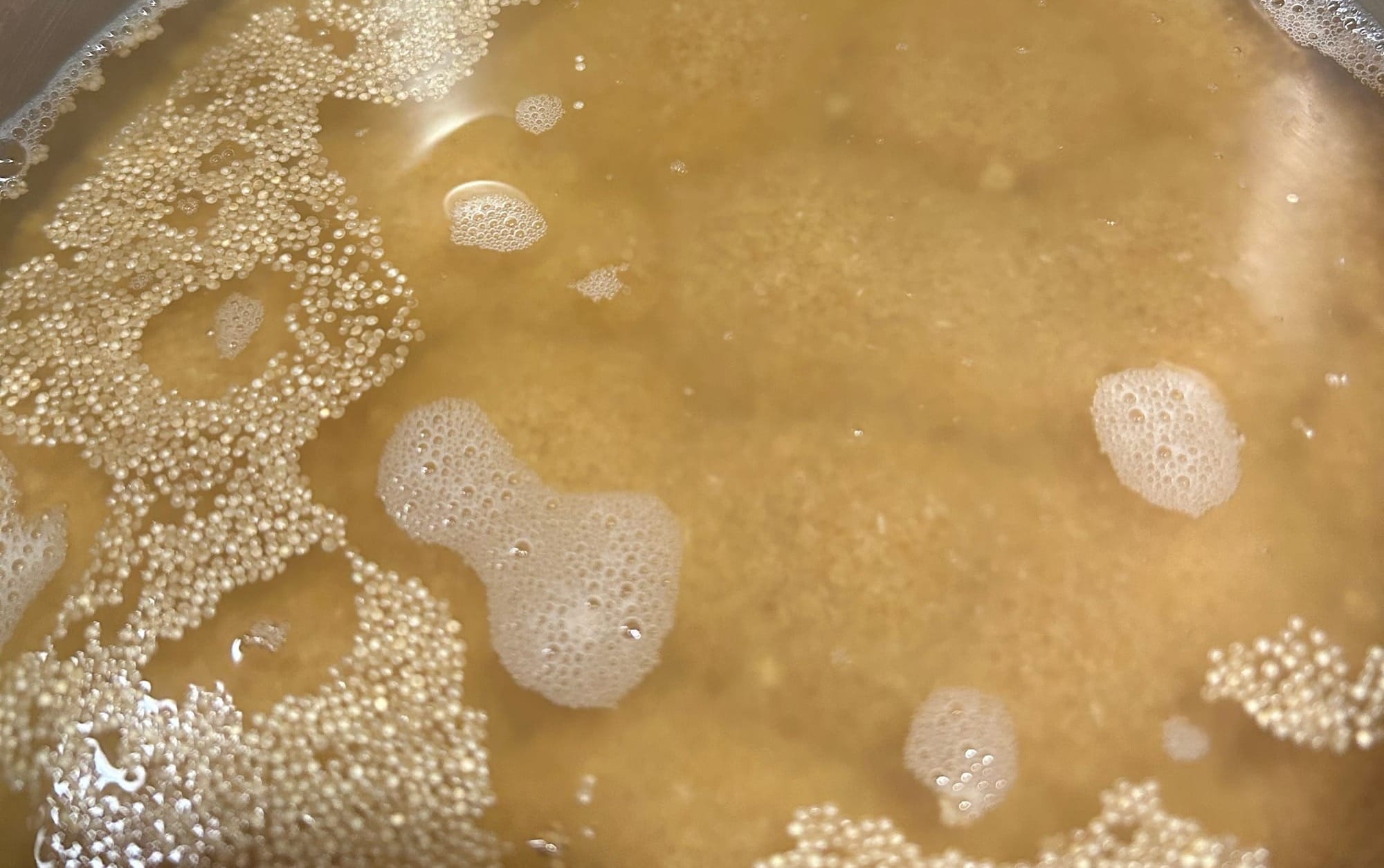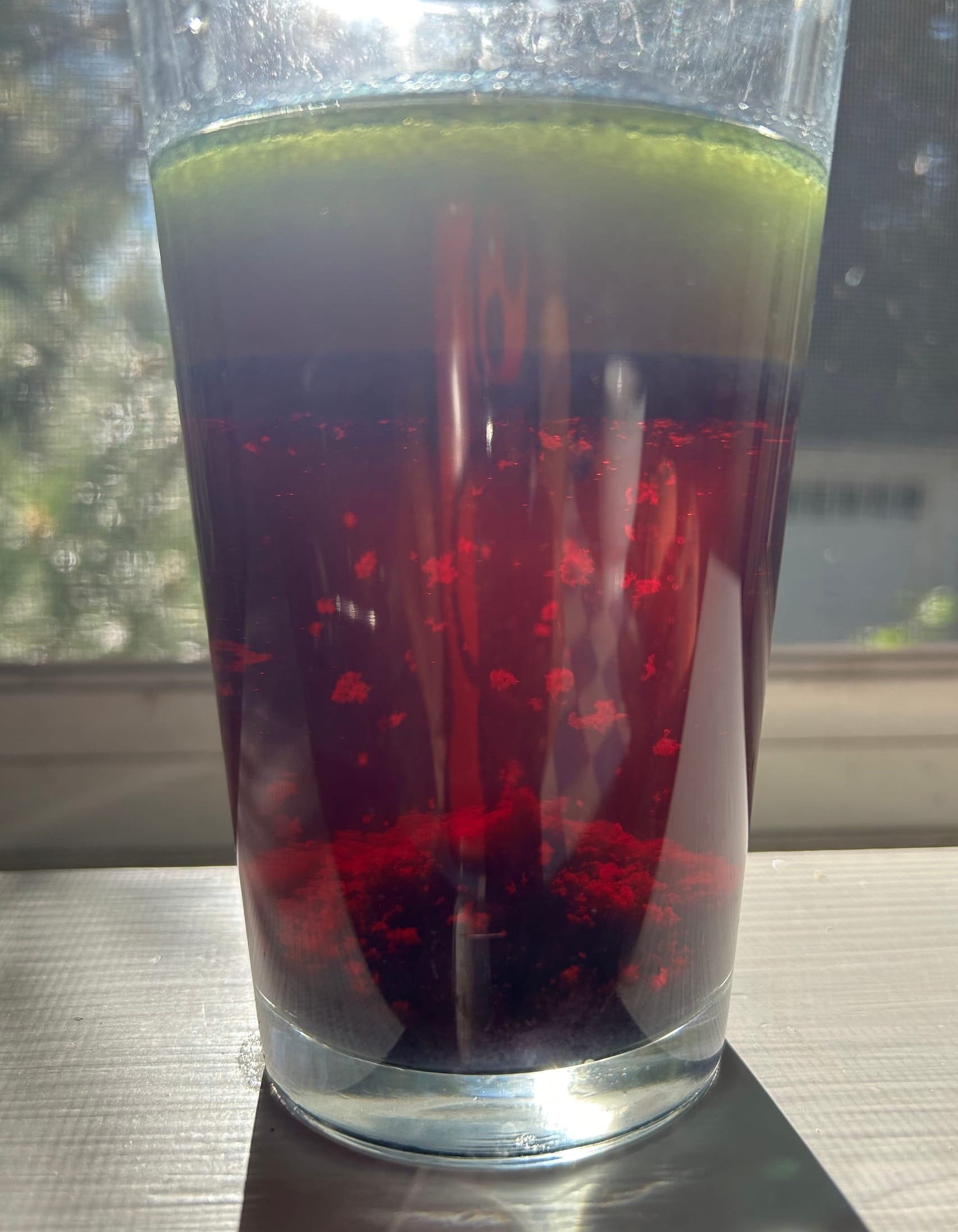Doing kitchen science: Part 1, messing around

Doing science with kids is inspiring and fun. One of the most accessible ways is “kitchen science,” which typically uses readily available, inexpensive ingredients. And sometimes you can eat the results! In fact, it’s so much fun that over the next few weeks I’ll publish three posts about it, each focusing on one of three basic approaches:
• Doing experiments with household ingredients like baking soda.
• Making food that relies on a particular physical, chemical, or biological principle (like steam production, acidity, or fermentation). Then eating it!
• Messing around (aka, cooking, observing, asking questions, and experimenting).
I’ll start with that last one, because it is what the grandkids and I have done most recently and most often.
Messing around with kitchen ingredients and cooking is terrific for doing science. The contrast—carefully following instructions in a science kit, book, or other lesson plan—offers better lessons in math and measurement, controlled experimentation, and typically in some scientific principle that the experiment presents clearly. Plus it’s fun. But messy science is fun and educational in different ways: Skills gained include careful observation, creative responses to failed experiments, and exercising surprise and wonder. These skills and attitudes are just as important in doing science as the more precise tools. (I’ll skip the history/philosophy of science lecture here: Suffice it to say that the ability to observe carefully, ask unique questions, persevere or rethink after failure, and think outside the box have contributed to significant scientific discoveries.)
The keys to messy kitchen science are to:
• Stay alert to what you’re cooking, and draw your grandchild’s attention to something interesting you observe. The patterns of bubbles in boiling or simmering food, for example, can be intriguing, as can the way various substances cook: Does it wilt? Soften? Gelatinize? Get crisp? Brown? Burn? How come? In another example, pizza dough is amazing! You can draw the child’s attention to everything you do—adding a bit of sugar, kneading the dough, putting it in a warm place, punching the dough down. Better yet, you can let them get the feel by doing it themselves! Meanwhile, you can ask together, What’s the sugar for? Where does that smell come from? Why do you knead the dough? How does the dough double in size? Why does it get bubbles in it? Ooh, I get to punch it down? Does that hurt the yeast? What happens to the yeast when you bake the pizza? (One grandchild asked that and didn’t like the answer: Be forewarned.)

• Or, let the child run with something they observe or ask about. Let’s say that the child notices that oil and “water” (vinegar, lemon juice, etc.) don’t mix in salad dressing. Let them learn more about this by supplying a few ingredients. One grandson and I riffed on the basic observation that oil and water don’t mix with the help of a little vegetable oil, water, food coloring, and Dijon mustard. With minimal direction, I let him add a little of this and a little of that to see what happened. The messing around led to (very brief) discussions of densities and emulsions. See the photo below: Shaken up, this mix was an unappetizing coffee-like brown. But after sitting a couple days, what interesting layers—and rather pretty.

Open-ended, “mess around” kitchen science is tailor-made for grandparents who have less time pressure than parents typically do, and fewer specific objectives than teachers. With more time, and fewer requirements, process—and the creative and observational aspects of science—can take precedence over product. Plus (maybe) there’s a little less exasperation about cleaning up afterward!